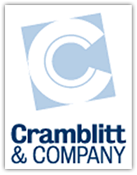Where have all the good heads gone?
September 14th, 2009 | 1 Comment
Before Twitter, there were even shorter blasts of pithy language, where plangent puns, juxtaposition, jaunty wordplay and irony stretched their splendid feathers daily.
They were called headlines. Sadly, they are becoming a lost art amid bland, search-engine-optimized titles affixed like a shabby gimme-cap above press releases and case studies.
Fortunately, we still have some examples of the art used to entice, delight and amuse.
Heads of the class
Give thanks that the New York Post continues to wave the flag. The Post, of course, penned perhaps the greatest tabloid headline: “Headless Body Found in Topless Bar.” In the past couple of years, Post headlines have branded the womanizing Alex Rodriguez as “Stray Rod” and blared this message after a humiliating Yankee loss on a Mexican holiday: “Stinko de Mayo.”
In a more serious vein, the Wall Street Journal holds sway daily with an array of headlines that draw a curious reader into the story like a barker in front of a circus tent. Wow, I never knew I’d be interested in yak farming! WSJ can put on the jester’s cap at times, too, as when it topped its story about petty jealousy among male British writers toward Martin Amis with this tickler: “British Writers Suffering from Amis Envy.”
Why heads matter
OK, so fun is fun, but what do great headlines have to do with the humble press release, case story or blog posting?
Just as in a newspaper, technical publication or web site, the headline makes the difference in who reads a piece and who doesn’t. Take a look at Business Wire or PR Newswire. Is there a headline in any of those press releases that makes you want to read it?
Now, I know what you’re saying: “We can’t do what news outlets do. We have requirements, such as getting the company’s name and/or keywords in the headline.” Yes, these are real challenges, but they shouldn’t make you settle for the mundane. You don’t have to be Oscar Wilde: If you can’t make the headline entertaining, or the subject matter won’t support it, strive for clean, clear and concise.
Here are some examples from my vaults.
This one pulled out a user quote to add life to a new product announcement:
Red Gate’s new ANTS Memory Profiler 5:
“freaking sweet” to find memory leaks in minutes
Here’s another for a press release on software used to make 56-foot-tall models of soccer players:
Geomagic makes soccer players
larger than life in Zurich train station
If you can’t fit the differentiating information into a two-deck headline, opt for the big kicker head followed by a detailed headline:
The City Tap opens in Pittsboro
Amp builder, ex-bookseller and sculptor combine comfort
of neighborhood bar with eclectic mix of art, sound, food & drink
It’s your business
None of the above headlines is a classic, but they are different enough from the bland labels that sit atop most stories – just enough to attract an editor or to pull in readers that might otherwise pass over this material. And, ultimately, that’s what we’re supposed to be doing – getting people to pay attention. It’s not a sideline or an ancillary goal; it’s a requirement. Every time out, we need to remember that the story starts from the top.

